The FNA-B43 (Fabbrica Nazionale d’Armie) was developed in Brescia, Italy during World War II. The Beretta M38 series of submachine guns were serving very well, but the volume of guns demanded by the war allowed the opportunity for other companies and designs to get a foot in the door, and the FNA-B43 was one of these. It is a sophisticated and effective design, but expensive to manufacture (those two attributes so often go together).
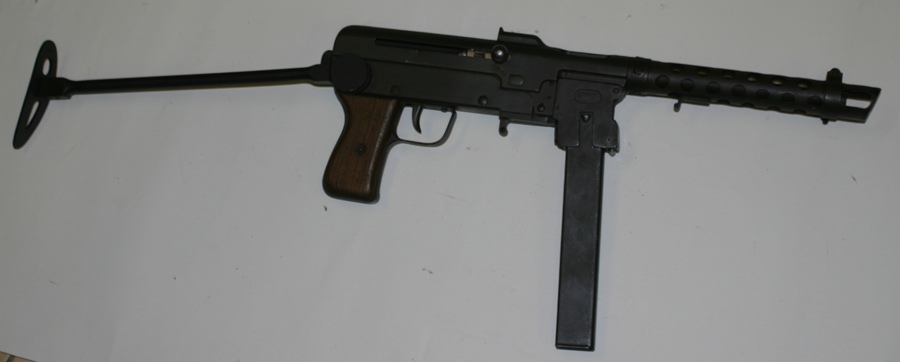
The FNA-B43 is a sturdy and well-constructed gun, made of machined components and not stampings. The gun is designed with ease of carry in mind, with a folding stock and a pivoting magazine well. This allows the gun to be easily transported with a full 40-round magazine in place (it uses standard Beretta M38 magazines) without being bulky or risking accidental discharge. It uses lever-delayed bolt design which is very effective (and fires from the closed position) but time-consuming and expensive to manufacture.
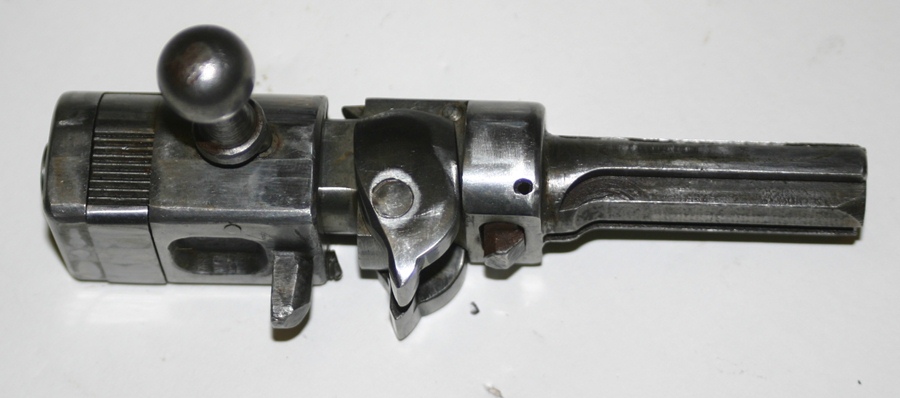
The pair of levers force the rear part of the bolt to move before the front part can, thus delaying extraction of the fired cartridge until after pressure has dropped to a safe level. It also slowed the rate of fire down from that of typical blowback submachine guns to a very controllable 400 rounds per minute.
Roughly 7000 of these guns were built and issued to Italian and German forces before production ceased. They were ultimately just too expensive to justify, which is unfortunate because the design is a good one.
Photos
Please note that this particular example has been deactivated by welding over the firing pin hole in the bolt and pinning the barrel (click here to download the complete gallery in high resolution):




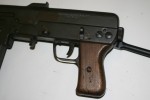
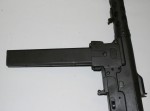












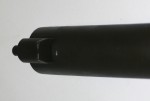







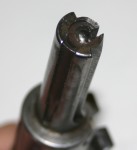






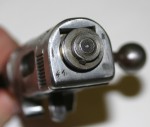

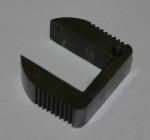
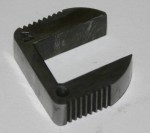
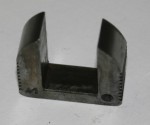
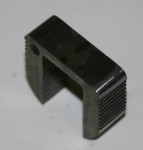
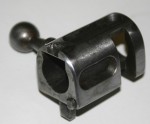
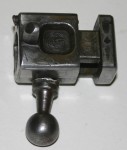
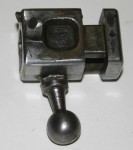





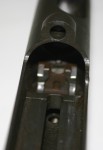


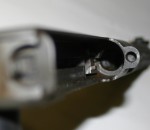
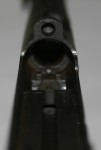
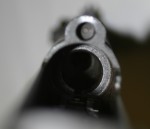

















You know, I always love intricate designs like this being a gun wonk. At the same time I have to question the logic behind producing something like this during wartime. I’ve always wondered how the G3 series of rifles, with their roller delayed blowback system, would stand up under long term war conditions considering their proclivity for being sensitive to ammunition and having finely machined parts. I think one of the reasons why so many militaries have gone toward gas-driven, rotating bolt type guns is ease of production on normal mills and lathes. Same reason why a lot of early personal weapons were a gas operated tilting bolt arrangement. They also tend to care less about what’s put in them as long as it has enough power to cycle the action. Of course, submachineguns generally care less anyway but the nicely milled bolt on this Maserati brought up these thoughts again.
As for G3…it holds pretty darn well!
Even after thousands of rounds fired from it during the war (cca 30 years ago) and
neglect (AT LEAST than 20 years) it fires great,has crisp trigger,smooth action after
complete clean-up and holds at least 2.2 MOA with iron sights with mixed ammunition
and sometimes even under 1 MOA with ammo that it likes to eat most!
OTHER Pros:”Normal” G3 is almost always more accurate (but not neccesary more reliable) than “normal” FAL and FAL is not THAT much accurate than “Normal” G3 (which almost always came with optics mount!
and requires less maintaining,while “good/DMR” FAL is not that much more accurate than
“standard/good” G3
Cons: -Unlike (FN) FAL it pretty much destroys all spent cartridges,so use it to spend Your Berdan-primed ammo!
-Also unlike FAL it apparently is easy “to dent it”(specially on rocky terrain under artillery fire!) and direct shrapnel hit from anything requires decent gunsmith on the terrain.
Another weapon impossible to find in youtube…
I saw one at Rovereto Castle Museum (near Trento – where we can see also a VARIARA). Sorry, I am not good with “on”, “in” and “at” (I am a brazilian and I never studied english).
Looking for movies I found this:
http://www.imfdb.org/wiki/Bonnie_and_Clyde_Italian_Style_(Bonnie_e_Clyde_all%27italiana)
How much does it weigh?
weight of FNAB 1943 (FNA B43) is 3,18 kg
Hello,
The total production of FNAB 43 was about 1.000 pieces.
The first 500 pieces have the text FNAB43 snxxxx BREVETTATA, the next 499 the written FNAB43 sn xxxx BREVETTO SCALORI
The serial numbers range are from 5000 to 5999.
Were never seen serial numbers higher of 5999 or lower of 5000.
The FNAB 43 that appears in the photos, is clearly a model re-used after the war!
Interesting observations although this is the first time I’ve heard the production figure of about 1,000. The 7,000 production figure goes back a long way but I’ve never seen any documentation to support this figure. I have heard from various sources that no FNA-B 1943 out of the 5000 range has been observed. The FNA-B which I own [C&R, amnesty registered]is in the 53XX range. There appears to be two variations of this SMG. One difference is the nomenclature, earlier onces bear “FNA-B Mod 1943 Mat.” with “Brevetta” underneath that. Also, the two selection switches [safety/mode] are marked “S” /”F” and “raffica”/”colpo”. What I assume to be later versions [like the one pictured here]are marked “Maschine -Pistole P.M.43” with “cal 9mm” underneath. I see no marks on the selection switches. Additionally, earlier versions have a round, milled trigger guard whereas later [?] versions appear to have a rectangular, stamped guard. From my experience, the cycle rate of 500 rds. min. may be a little low – I suspect it might be closer to 600 rds. min. but I haven’t conducted a timed experiment. In any event, an interesting “forgotten weapon” – just not a lot of info out there on it.
Rick,
the strange thing is that maschine pistole should be written in German Maschinenpistole.
the words “colpo” “raffica” S (sicura/ safe) F ( fuoco/ fire) were eliminated, it is very strange. you have to considered that this type of weapon has never been used by German troops, but only by units of the DECIMA MAS and the BRIGATE NERE ( Black Brigades).
In addition, all these weapons were originally blue finish and not parkerizing.
The ‘weapon photographed is certainly not in the original configuration.
Colpo= shot Raffica= full auto S= sicura/safe F= fuoco/ fire
FNA= Fabbrica Nazionale Armi (national weapons factory)
Giuseppe: I believe that you are correct concerning finishes – those with milled trigger guards have traditional blued finishes whereas those with stamped guards appear to have a black parkerized [?] finish. I failed to mention that on my example, the serial number appears after the inscription “Mat” yet I do not see a serial number on the example presented. I assume that it is somewhere and would like to know exactly where. Everything I can find tells me that this SMG was never adopted by Germany so I can see why the German words don’t appear. Besides, this part of Italy remained part of the ISR pretty much until the end of the war so I guess that the Italians continued making arms until the war ended. I have no clue as to what units, either German or Italian, received these weapons.
I have seen only a couple of photos of these guns actually being carried. I found one photo of an Italian partisan carrying one. In another photo, two female members of the FAL during the Algerian War are shown carrying FNA-Bs. Other than that, not much.
Until someone actually does some serious research, this weapon will remain a mystery. I think that some of the info out there which has been floating around for decades might not be correct – only my opinion. Rick
Mat. = Matricola / Serial
FNA-B 43 is also known as “Zerbino/Doormat”, Zerbino was the name of the minister of the interior during the RSI.
The designer was Scalori.
I actually thought up a similar concept for a delayed-blowback/recoil mechanism myself. I wonder how it compares to other delayed-blowback designs or even gas/recoil-operating mechanisms.
Hello
The one i have got is with german’s language “Maschine Pistole PM 43 there is a number “1” under the frame, i do sell another one a fews years ago with the number “21” in the same place. Could it be the German new serial number for the the FNAB 43 for German use?
Any guesses on about how much one of these couple be worth. Let’s say in “fair” condition
How much it costs?
Hi guys. I have a FNAB-43 that I’ve kept locked up and hidden for 50 years. It used to belong to my gun fanatic uncle. It appears to be in pretty good condition but is missing a few illusive parts. The rear stock is broken off the stem very close to the body of the gun. The four 4mm x .7 dog point screws that hold the shroud on and barrel to the body. The rear sling clip. It’s #43 of the the reported 1000. Thanks
Hey Tom!
Is your FNAB43 deactivated? If so, would be interested in it as a wall hanger.
Bill
Sorry, I knew there were too many 43s in that post. Mine is # 53 of 1000.
If ANYONE has FNAB-34 in whichever condition and wants to “get rid of it”
Deactivated or not, we can discuss how to either repair and then deactivate it according to the law! I could probably repair your too as I had
repaired old rifles many times before using only rudimentary hand tools and a good neighbor who has a lathe! lol)
I am also fruitlessly looking for the Panzerfaust!
30,60,100..It does not matter! As long as nothing is broken on the tube to withstand the pressure as ONE PANZERFAUST that could fire dummy/replica warhead full of stirofoarm btg with right size would be an absolute attraction for the battle reincarnations where there are era armoured wehicles too!
I consider myself more than a decent gunsmith since everyone who heard about me and had some problems with the hunting or other rifles (people here use old WW1 and WW2 rifles for hunting AND OF COURSE rifles from our war of Independence in the 90s!
I repaired everything from Lugers, Thompsons from Carcanos and Gew 41s and 43s,
one SVT-40, and all the lever-action guns you can imagine, but keep gull auto ones home, F-A, unfortunately, are mostly deactivated so I do that job too respectfully to the old masterpieces that don’t deserve to be cut in half as an old iconoclastic law required,just make the receiver not to move and the firing-pin removed!)
So, people rather give it to me (instead of spending a few 100€, usually more than the piece costs) as my “price” is one month of keeping it and if possible shooting it! Preserving Forgotten Weapons for new generations is all I want!